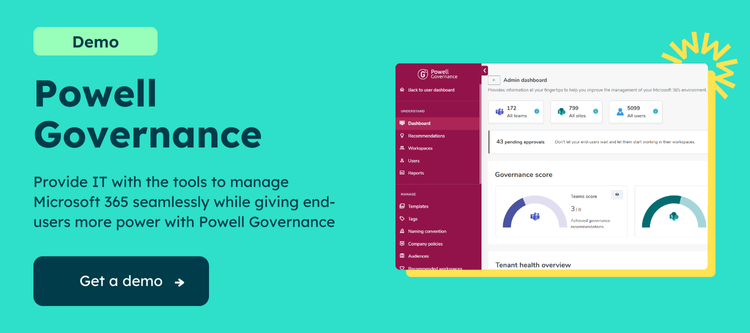Digital Transformation or Collaboration Tool Modernization?
Digital transformation in companies has taken on new momentum since 2020 with the widespread adoption of remote work. The digital workplace and its communication and collaboration solutions are at the heart of this transformation. In this article, we will highlight the difference between simple tool modernization and true digital transformation. We will take the example of transitioning from email to Microsoft Teams to communicate about projects within a company.
Digital transformation involves using digital tools to improve employee productivity or relationships with customers and partners. This involves creating more added value and more effectively implementing processes within the company. It is important to note that there is a significant difference between simply modernizing the tools used and a true transformation of processes. The latter requires a deeper and more collaborative change management approach. State of the art of Internal transformations at the consulting firm Lecko perfectly details these differences.
From Email to Microsoft Teams
Let’s take the example of communication between members of different departments for the realization of a cross-functional project. For years, this communication has been based on the exchange of emails and attachments with all the inherent drawbacks: adding a person in the middle of a discussion without breaking the thread of the discussion into multiple exchanges, attaching the wrong version of a document, etc.
The transition to Microsoft Teams resolves these problems related to email exchanges. However, there are two ways to chat in real-time in Microsoft Teams: chat and conversations in team channels.
The use of Microsoft Teams has experienced explosive growth since 2022, with over 270 million monthly active users. However, many employees have modernized their communication by moving from email to chat or online meetings in Microsoft Teams. This is an improvement in communication tools because chat allows for greater fluidity of exchanges: adding people in the middle of a discussion without breaking the thread of the discussion, working around a single document version stored in the discussion (in practice in OneDrive or SharePoint), tabs to quickly access Office 365 tools, business applications or external links.
Despite this, a major flaw in communication via email remains when communicating only around chats and meetings. Employees create as many discussion threads as there are topics, or worse, there can be several discussion threads and meetings around the same subject, such as a project that lasts several weeks. So, we fall back on the flaw of emails: how to find information? How to avoid creating inevitable silos by creating different discussion threads around the same topic?
True Digital Transformation: Discussions in Microsoft Teams Team Channels
To truly transform communication and collaboration practices within a company, it is crucial to hold discussions around projects in Microsoft Teams team channels. Teams can be organized around major business processes, such as tracking a call for tenders, organizing marketing events, or tracking customer relationships. These teams can then be subcategorized into channels, for example, by sales territory, geographic area, or a major client. Using these team channels to hold discussions around the same project is the most effective way to communicate and collaborate within the company.
On a daily basis, when searching for information related to a project, it is easy to find the necessary information in the relevant team channel. Channels are also more open and inclusive. When a discussion is created for a subject that concerns a small group of people, these people can be specifically notified within the channel, but other members of the channel can also become aware of the discussion and contribute. This approach promotes serendipity and allows employees to discover topics they may not have initially thought of.
The obstacles to adopting team channel discussions
However, despite the obvious benefits of team channels, some employees may be hesitant to adopt them fully. This is because it is a transformation of practices that requires inevitable change management. It is important to train users properly and adjust channel notifications to make them effective. Microsoft Teams offers many settings for channel notifications, ranging from all activities to being notified when explicitly mentioned.
Beyond mastering the tool, it is also necessary to transform processes and the collaborative mindset. It is crucial to understand that even if a person is not currently involved in a project, they can still contribute value to it by being integrated smoothly into the discussion. Team channels facilitate this integration easily.
However, there are still some irritants that Microsoft Teams do not resolve, and that can hinder the adoption of team channels for project and discussion tracking. It is particularly difficult to organize the list of teams to which one belongs and to quickly find them with keywords. It would also be interesting to be able to create important teams based on project templates created by experts in the company.
Managing the life cycle of teams, that is, involving the right people, opening the right writing and reading rights, and above all, closing inactive teams or automatically archiving teams at the end of a project, is also a challenge to overcome.
Overcoming these obstacles with Powell Teams
Powell Teams is an application developed by Powell Software to help companies overcome obstacles related to the use of Microsoft Teams team channels. It offers a complete solution for organizing, managing, and archiving teams, allowing employees to find relevant teams and avoid confusion between active and inactive teams.
With Powell Teams, companies can create important teams based on project templates established by company experts. They can also manage the life cycle of teams, involving the right people and opening the necessary writing and reading rights while closing inactive teams or automatically archiving teams at the end of a project.
Conclusion
Digital transformation is not just about modernizing communication and collaboration tools. It requires a transformation of practices and mindsets in the company. Team channels on Teams offer a more effective way to communicate and collaborate, but their adoption requires change management.
Finally, irritants related to the use of team channels can be resolved through solutions such as Powell Teams, which allow companies to optimize their use of Teams for more productive collaboration.
And you, where are you in your digital transformation? Are you ready to adopt team channels on Teams?




